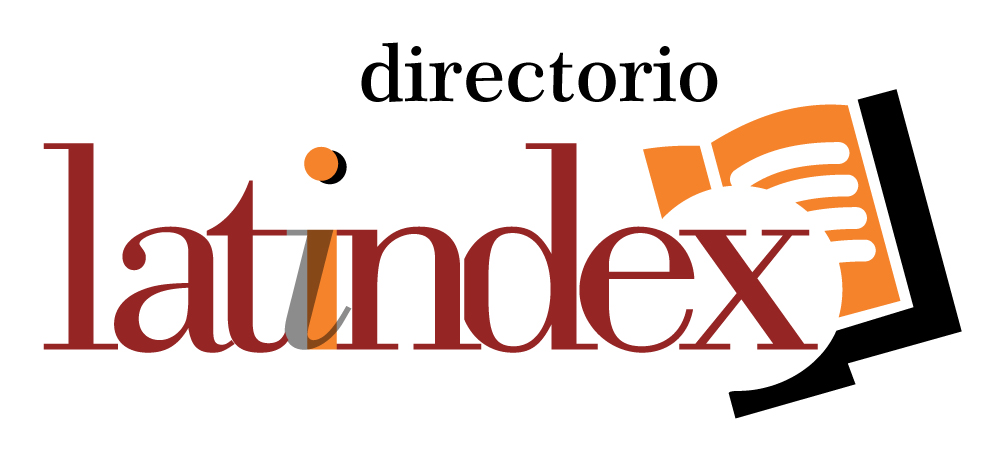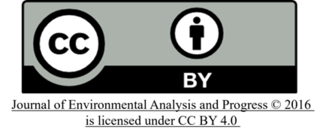Microplastics identification in an environmental reserve area of Ilha de Itamaracá – PE
DOI:
https://doi.org/10.24221/jeap.10.2.2025.6399.088-093Palavras-chave:
Petrochemical pollution, ecosystems, environment, mangroveResumo
Microplastics are present in numerous aquatic ecosystems worldwide. They can originate from the deterioration of larger plastics or be produced directly, such as microbeads in personal care products. Research on the presence of microplastics in aquatic environments is highly relevant due to their environmental impacts on flora, fauna, and human health. These microscopic plastic fragments, smaller than five millimeters, have been found in rivers, oceans, lakes, and even mangroves worldwide. This study aimed to evaluate the presence or absence of microplastics in environmental preservation areas, APA Santa Cruz, Ilha de Itamaracá- PE, in aquatic environments. Mangrove water samples from Ilha de Itamaracá were collected and analyzed, revealing a significant discrepancy between sample collection points that were very close. The results indicate the presence of microplastics in the area, with a notable difference between the two collection points studied. In that sense, there is a clear need for a better understanding of how microplastics interact with the aquatic environment. A more in-depth study is necessary to develop effective strategies for mitigating negative environmental impacts.Downloads
Referências
Belo, I. C. B.; Andrade, B. N. P.; Miranda, J. P. A.; Drumond, P. C. D. 2021. Microplásticos, seus Impactos no Ambiente e Maneiras Biodegradáveis de Substituição. Revista Internacional de Ciências, 11, (2), 214-228. https://doi.org/10.12957/ric.2021.54481
Brasil. 2000. Lei nº 9.985, de 18 de julho. Regulamenta o art. 225, § 1o, incisos I, II, III e VII da Constituição Federal, institui o Sistema Nacional de Unidades de Conservação da Natureza e dá outras providências. Casa Civil - Subchefia para Assuntos Jurídicos, Brasília, DF.
Brito, T. S. A. 2014. A contribuição dos fragmentos plásticos na composição do lixo marinho nas praias de Salvador-BA. Monografia. Universidade Federal da Bahia, Salvador. 44p. http://oceanografia.ufba.br/Monografia_Thiago_%20Brito.pdf
Bugatti, C.; Almeida, K. C. de; Guimarães, M. S. de A.; Amâncio, N. de F. G. 2023. Microplastics and Nanoplastic and their relevance in human health: literature review. Research, Society, and Development, 12, (1), e6712139302. https://doi.org/10.33448/rsd-v12i1.39302
Caixeta, F. C. 2018. Nano e Microplásticos Nos Ecossistemas: Impactos Ambientais Efeitos Sobre os Organismos. Enciclopédia Biosfera, 15, (27), 19-34. https://conhecer.org.br/ojs/index.php/biosfera/article/view/607
Corrêa, L. S.; Silveira, T. F.; Rocha, C. M.; Maffessoni, D. 2021. Microplásticos nas águas do estuário Tramandaí - Armazém, Litoral Norte do Rio Grande do Sul, Brasil e relação com a qualidade da água. Revista de Gestão de Água da América Latina, 18, e10. https://doi.org/10.21168/rega.v18e10
Duarte, W. de J. B. 2022. Lixo Plástico: Uma Ameaça à Vida Marinha. Revista Ibero-Americana de Humanidades, Ciências e Educação, 8, (8), 22-31. https://doi.org/10.51891/rease.v8i8.6488
Genchi, L.; Martin, C.; Laptenok, S. P.; Baalkhuyur, F.; Duarte, C. M.; Liberale, C. 2023. When microplastics are not plastic: Chemical characterization of environmental microfibers using stimulated Raman microspectroscopy, Science of The Total Environment, 892, 164671, https://doi.org/10.1016/j.scitotenv.2023.164671
Kye, H.; Kim, J.; Ju, S.; Lee, J.; Lim, C.; Yoon, Y. 2023. Microplastics in water systems: A review of their impacts on the environment and their potential hazards. Heliyon, 9, e14359. https://doi.org/10.1016/j.heliyon.2023.e14359
Massarelli, C.; Campanale, C.; Uricchio, V. F. 2021. A Handy Open-Source Application Based on Computer Vision and Machine Learning Algorithms to Count and Classify Microplastics. Water, 13, 2104. https://doi.org/10.3390/w13152104
Montagner, C. C.; Dias, M. A.; Paiva, E. M.; Vidal, C. 2021. Microplásticos: Ocorrência Ambiental e Desafios Analíticos. Quim. Nova, 44, (10), 1328-1352. http://dx.doi.org/10.21577/0100-4042.20170791
Nanni, H. C.; Nanni, S. M.; Segnini, R. C. A. 2005 A Importância dos Manguezais para o Equilíbrio Ambiental. II Simpósio Internacional de Ciencias Integradas da UNAERP Campus Guarujá. 12p.
Neves, C. V.; Pierri, B. S.; Fonseca, M. E. 2022. Os Desafios do Uso Ambientalmente Sustentável de Plásticos: Uma Breve Reflexão. Revista S&G, 17, (1), 1-2. https://doi.org/10.20985/1980-5160.2022.v17n1.1796
Olivatto, G. P.; Carreira, R.; Tornisielo, V. L.; Montagner, C. C. 2018. Microplásticos: Contaminantes de Preocupação Global no Anthropocene. Rev. Virtual Quim., 10, (6), 1968-1989. http://dx.doi.org/10.21577/1984-6835.20180125
Oliveira, M. G. 2022. A Governança Ambiental Global Como Mecanismo de Enfrentamento da Poluição dos Oceanos Por Plástico. TCC Bacharelado em Direito. Faculdade de Direito de Vitória. 59p.
Rahman, A.; Sarkar, A.; Yadav, O. P.; Achari, A.; Slobodnik, J. 2020. Potential human health risks due to environmental exposure to microplastics and knowledge. Gaps: A scoping review, Science of the Total Environment, 757, 143872. https://doi.org/10.1016/j.scitotenv.2020.143872
Rosal, R. 2021. Morphological description of microplastic particles for environmental fate studies. Marine Pollution Bulletin, 171, 112716. https://doi.org/112716. 10.1016/j.marpolbul.2021.112716
Silva, L. F. 2021. Influência do índice de radiação ultravioleta e salinidade na fotodegradação de Microplásticos. Dissertação (Mestrado), Universidade Federal do Rio Grande. Rio Grande-RS. Revista S&G, 17, (1), 1-2. Available at: https://ppgo.furg.br/images/Dissertao_final_Luana.pdf. Access at: 10/10/2023.
Silvestrova, K.; Stepanova, N. 2021. The distribution of microplastics in the surface layer of the Atlantic Ocean from the subtropics to the equator according to visual analysis, Marine Pollution Bulletin, 162, 111836. https://doi.org/10.1016/j.marpolbul.2020.111836
Souza, C. A.; Duarte, L. F. A.; João, M. C. A.; Pinheiro, M. A. A. 2018. Biodiversidade e conservação dos manguezais: importância bioecológica e econômica. Cap. 1, pp. 16-56. In: Pinheiro, M. A. A.; Talamoni, A. C. B. (Org.). Educação Ambiental sobre Manguezais. São Vicente: UNESP, Instituto de Biociências, Câmpus do Litoral Paulista, 165p.
Urli, S.; Corte Pause, F.; Crociati, M.; Baufeld, A.; Monaci, M.; Stradaioli, G. 2023. Impact of Microplastics and Nanoplastics on Livestock Health: An Emerging Risk for Reproductive Efficiency. Animals, 13, 1132. https://doi.org/10.3390/ani13071132
Xia, F.; Yao, Q.; Zhang, J.; Wang, D. 2021. Effects of seasonal variation and resuspension on microplastics in river sediments, Environmental Pollution, 286, 117403. https://doi.org/10.1016/j.envpol.2021.117403
Zhou, Q.; Tu, C.; Yang, J.; Fu, C.; Li, Y.; Waniek, J. J. 2021 Trapping of Microplastics in Halocline and Turbidity Layers of the Semi-enclosed Baltic Sea. Front. Mar. Sci., 8, 761566. https://doi.org/10.3389/fmars.2021.761566
Downloads
Publicado
Como Citar
Edição
Seção
Licença
Copyright (c) 2025 Erik Castilho Bussmeyer, Cândida Juliana Albertin Santos, Laureen Michelle Houllou

Este trabalho está licenciado sob uma licença Creative Commons Attribution-NonCommercial-ShareAlike 4.0 International License.
Material protegido por direitos autorais e plágio. No caso de material com direitos autorais ser reproduzido no manuscrito, a atribuição integral deve ser informada no texto; um documento comprobatório de autorização deve ser enviado para a Comissão Editorial como documento suplementar. É da responsabilidade dos autores, não do JEAP ou dos editores ou revisores, informar, no artigo, a autoria de textos, dados, figuras, imagens e/ou mapas publicados anteriormente em outro lugar. Se existir alguma suspeita sobre a originalidade do material, a Comissão Editorial pode verificar o manuscrito por plágio. Nos casos em que trechos já publicados em outro documento for confirmado, o manuscrito será devolvido sem revisão adicional e sem a possibilidade de nova submissão. Autoplágio (ou seja, o uso de frases idênticas de documentos publicados anteriormente pelo mesmo autor) também não é aceitável.
Direitos autorais: Autor
Material protected by copyright and plagiarism rights. In the case of copyrighted material being reproduced in a manuscript, full attribution should be informed in the text; an authorization document is proving to be sent to the Editorial Board as a supplementary document. It is the responsibility of the authors, not JEAP or editors or reviewers, to inform, in the article, the authors of texts, data, graphics, images and maps previously published elsewhere. If there is any suspicion about the originality of the material, the Editorial Board can check the manuscript for plagiarism. Where plagiarism is confirmed, the document will be returned without further review and the possibility of a new submission. Self-plagiarism (i.e., the use of the same phrases previously published documents by any of the authors) is not acceptable.
Copyright: Author






